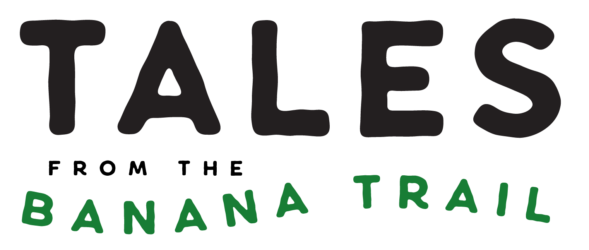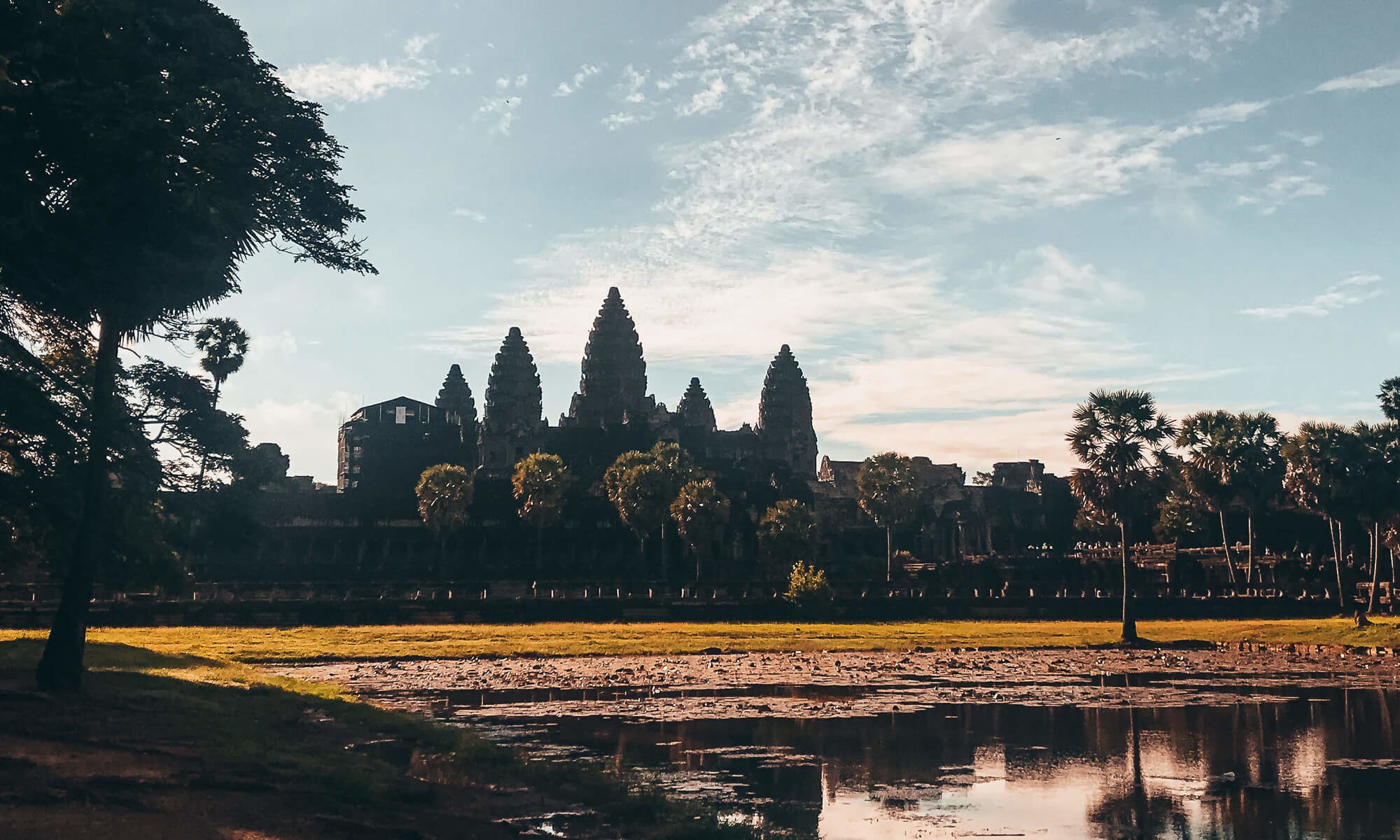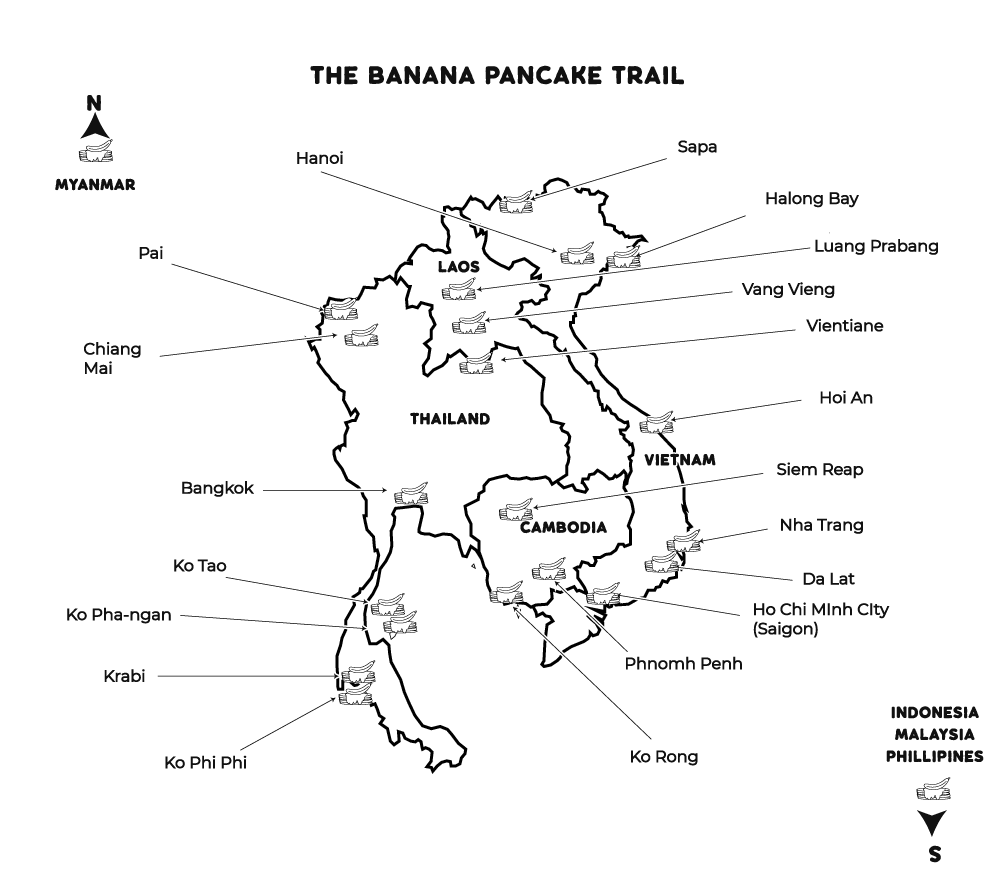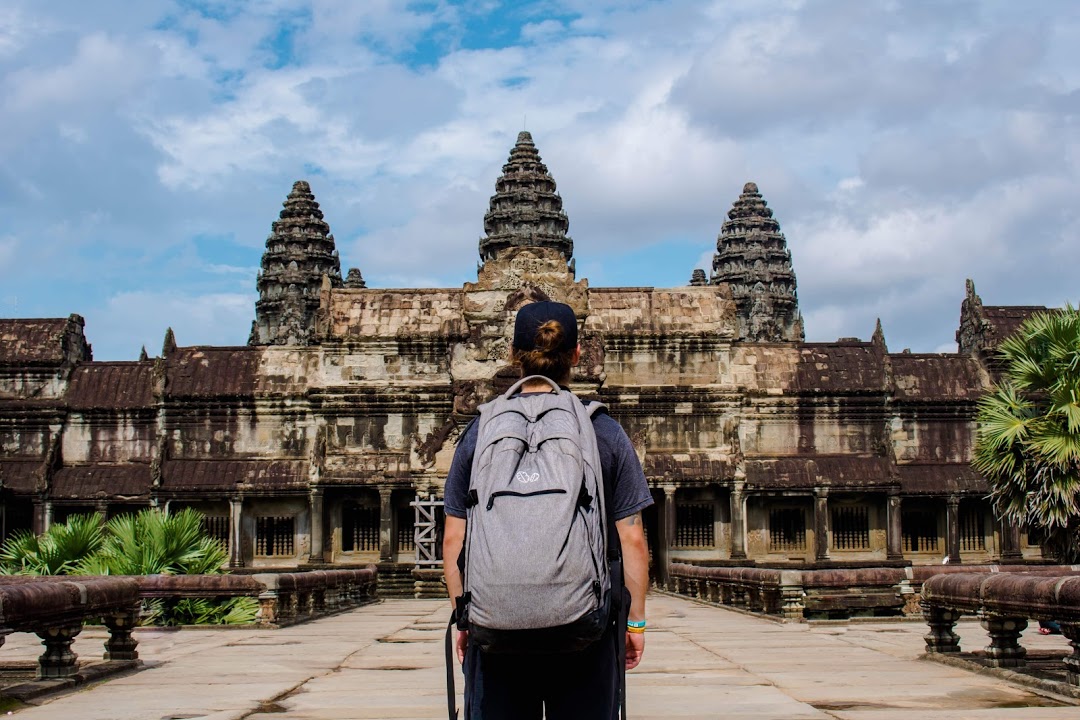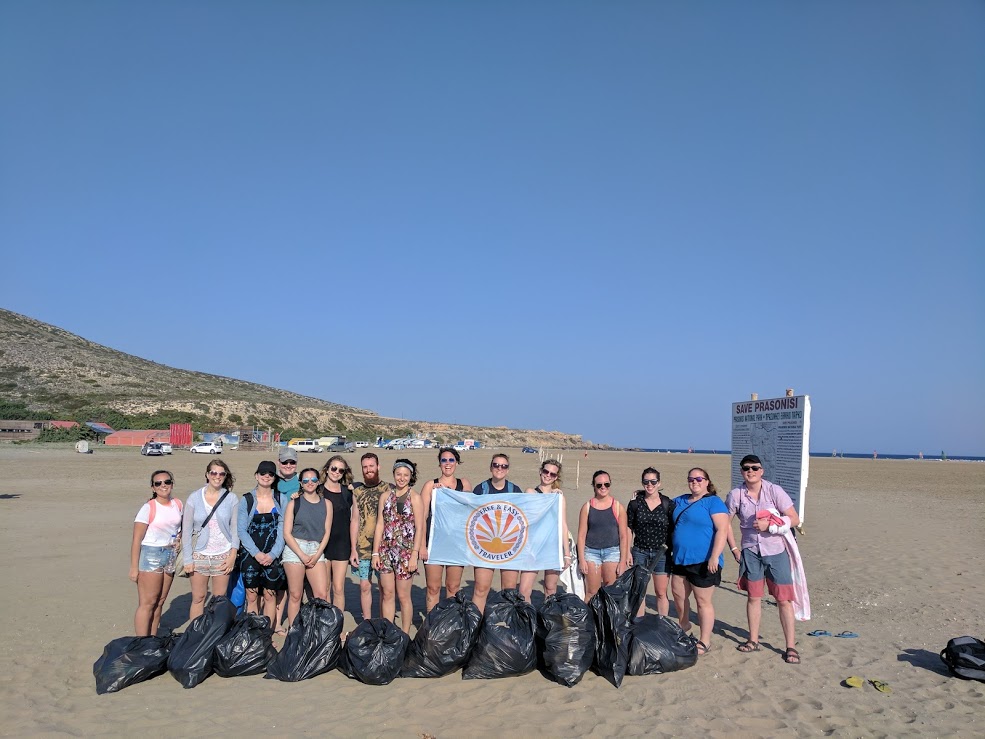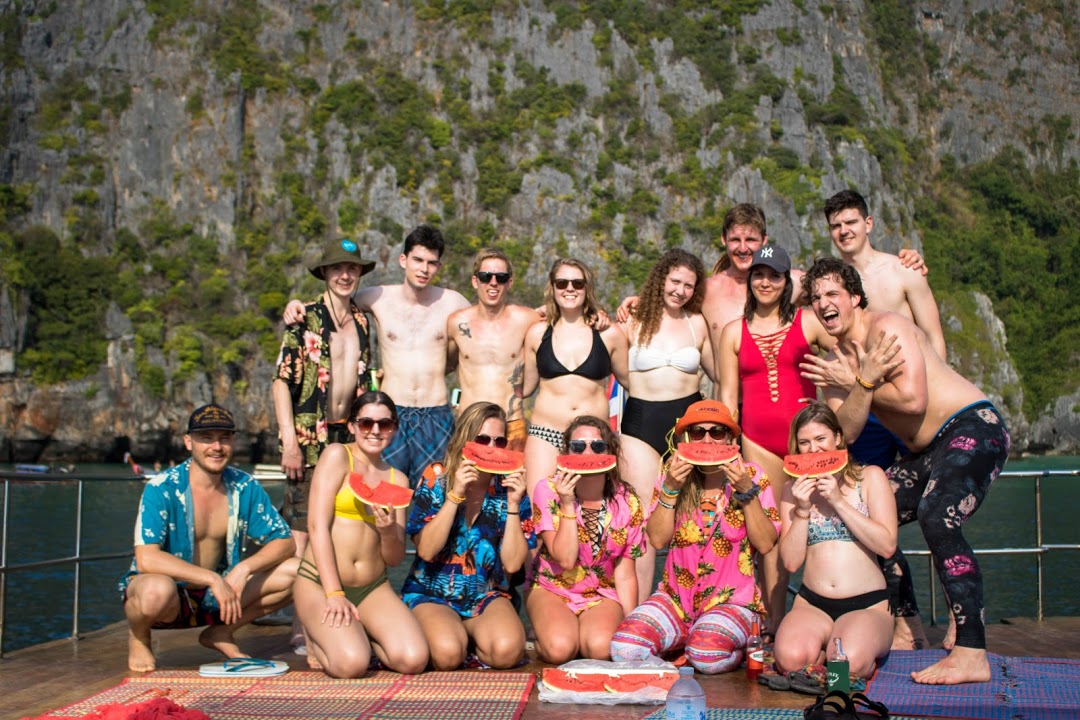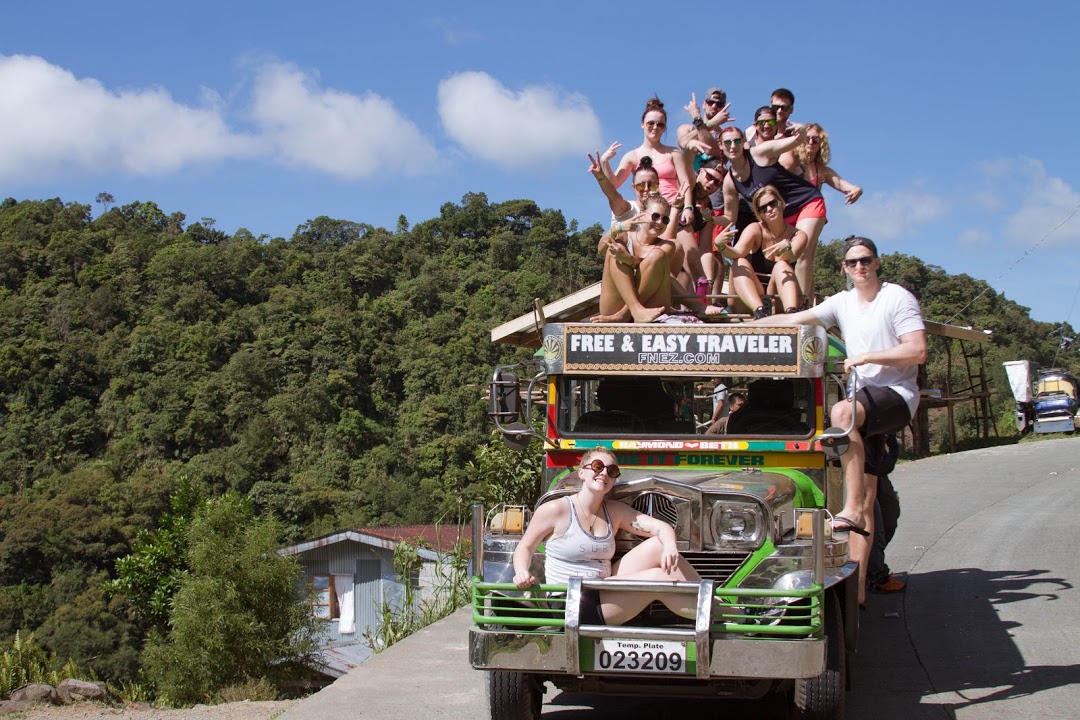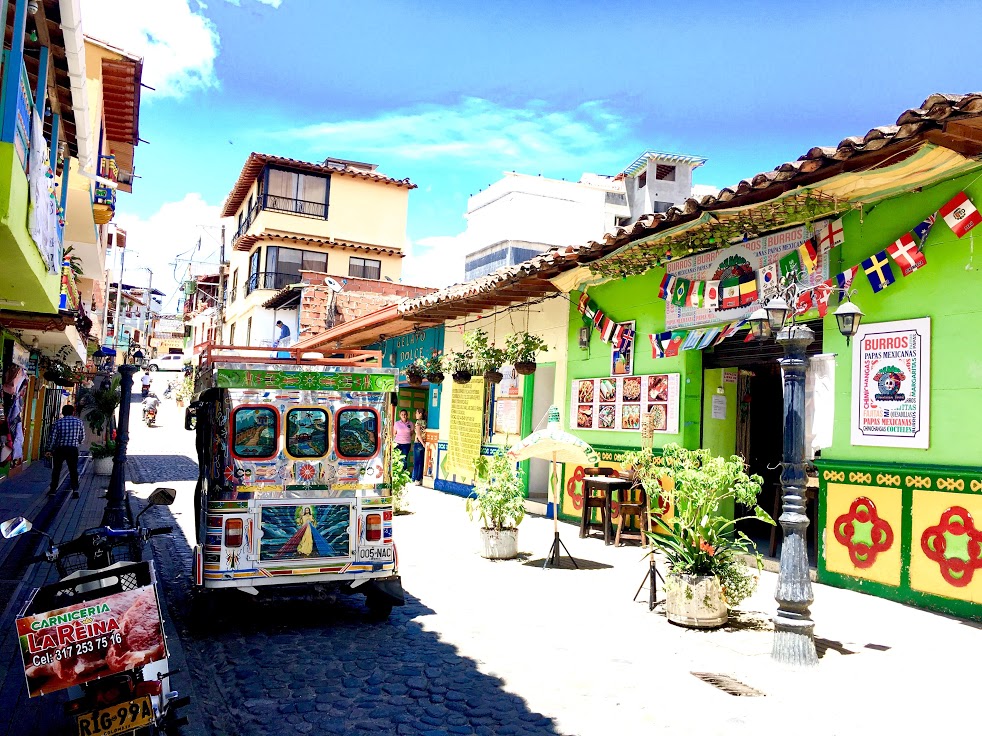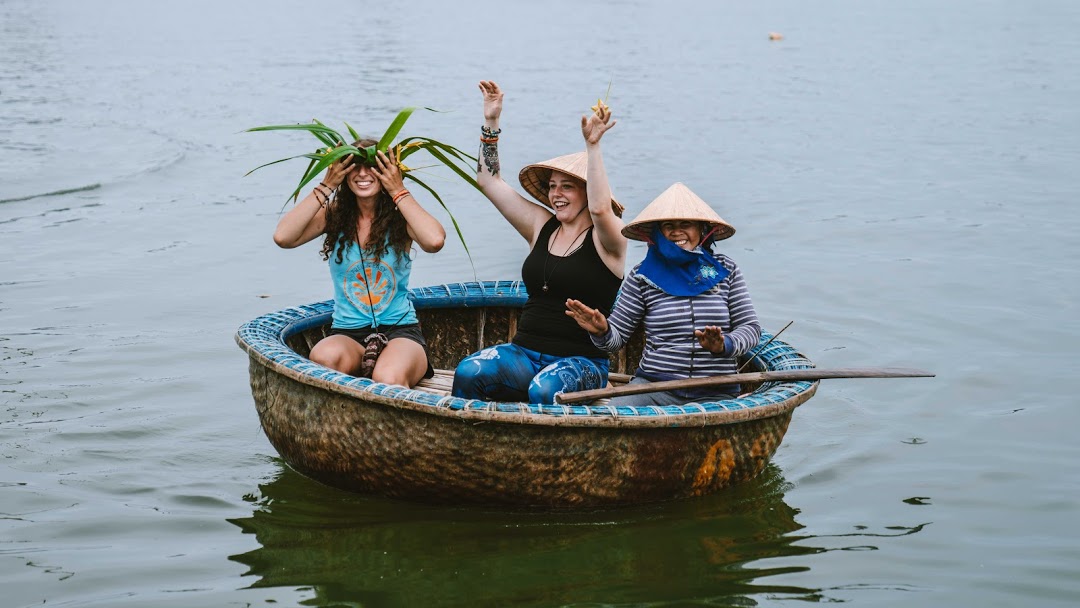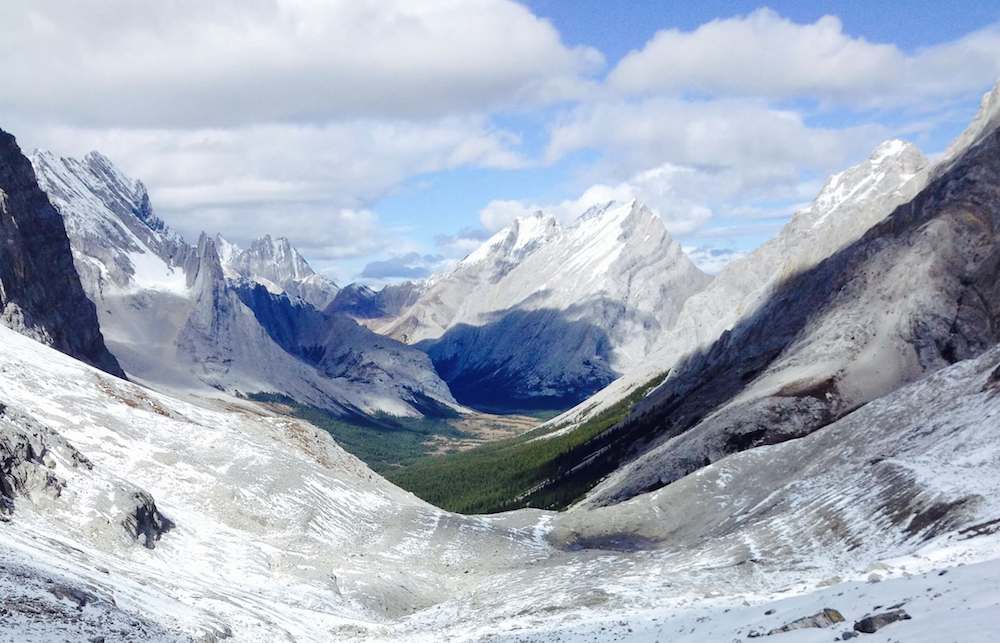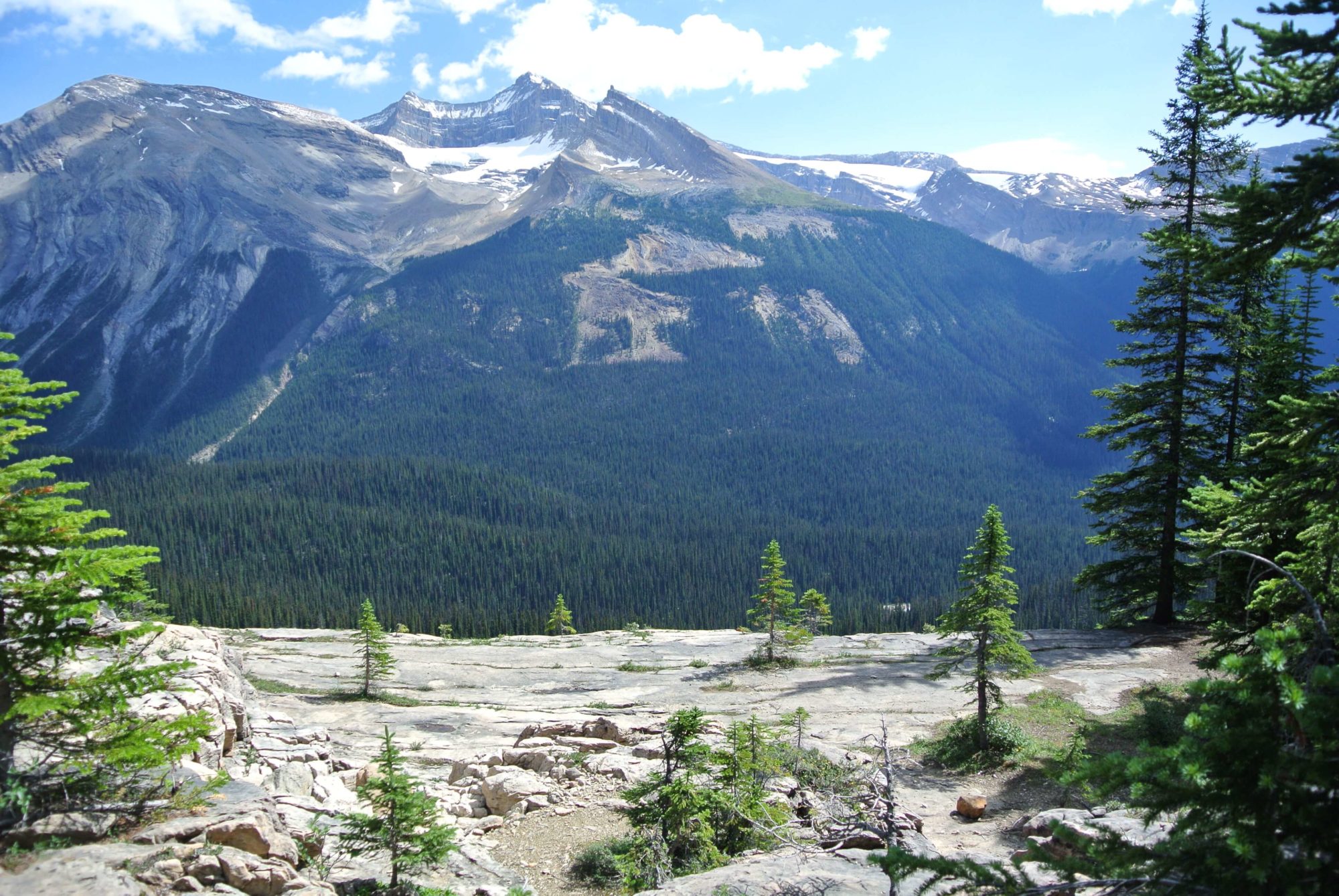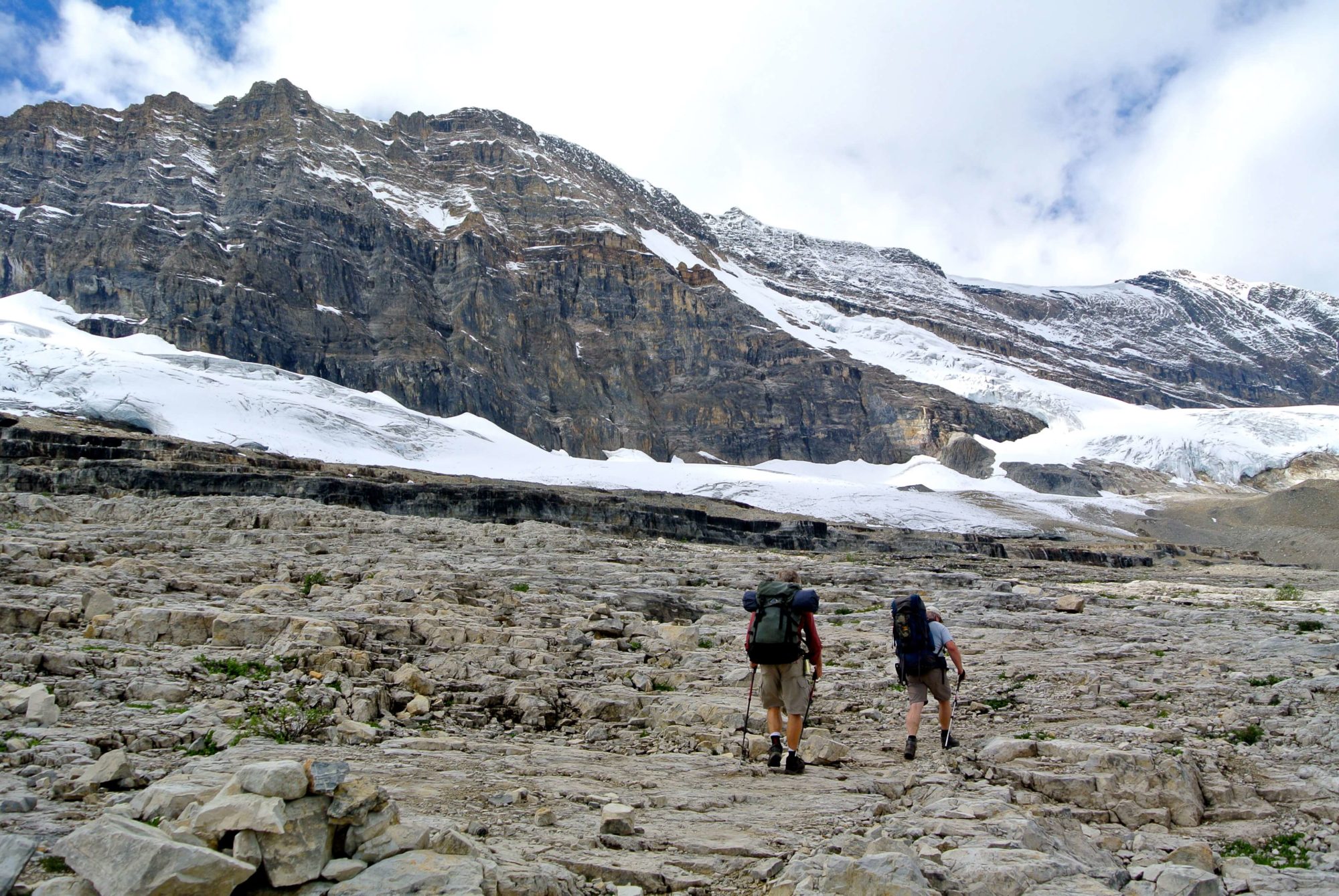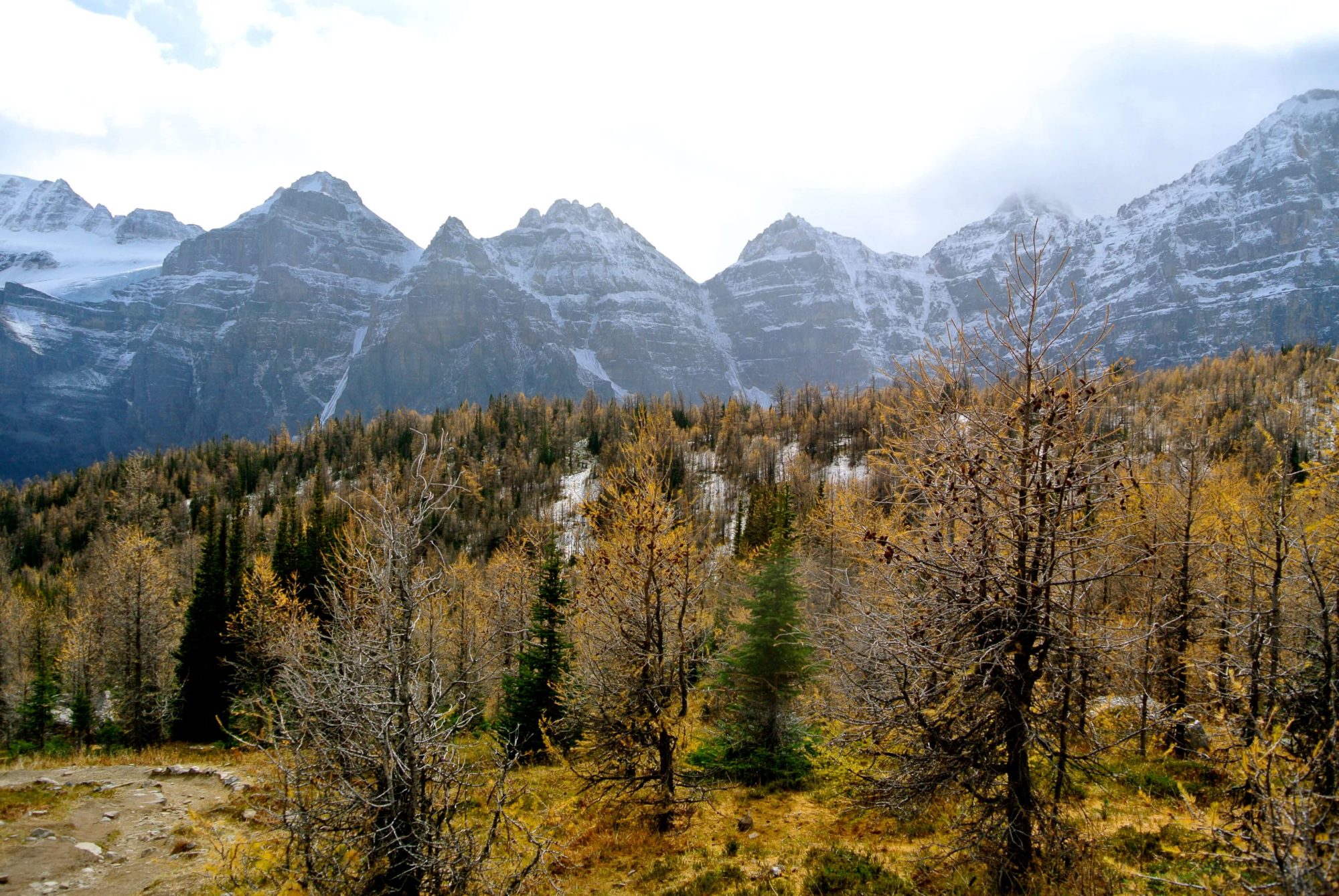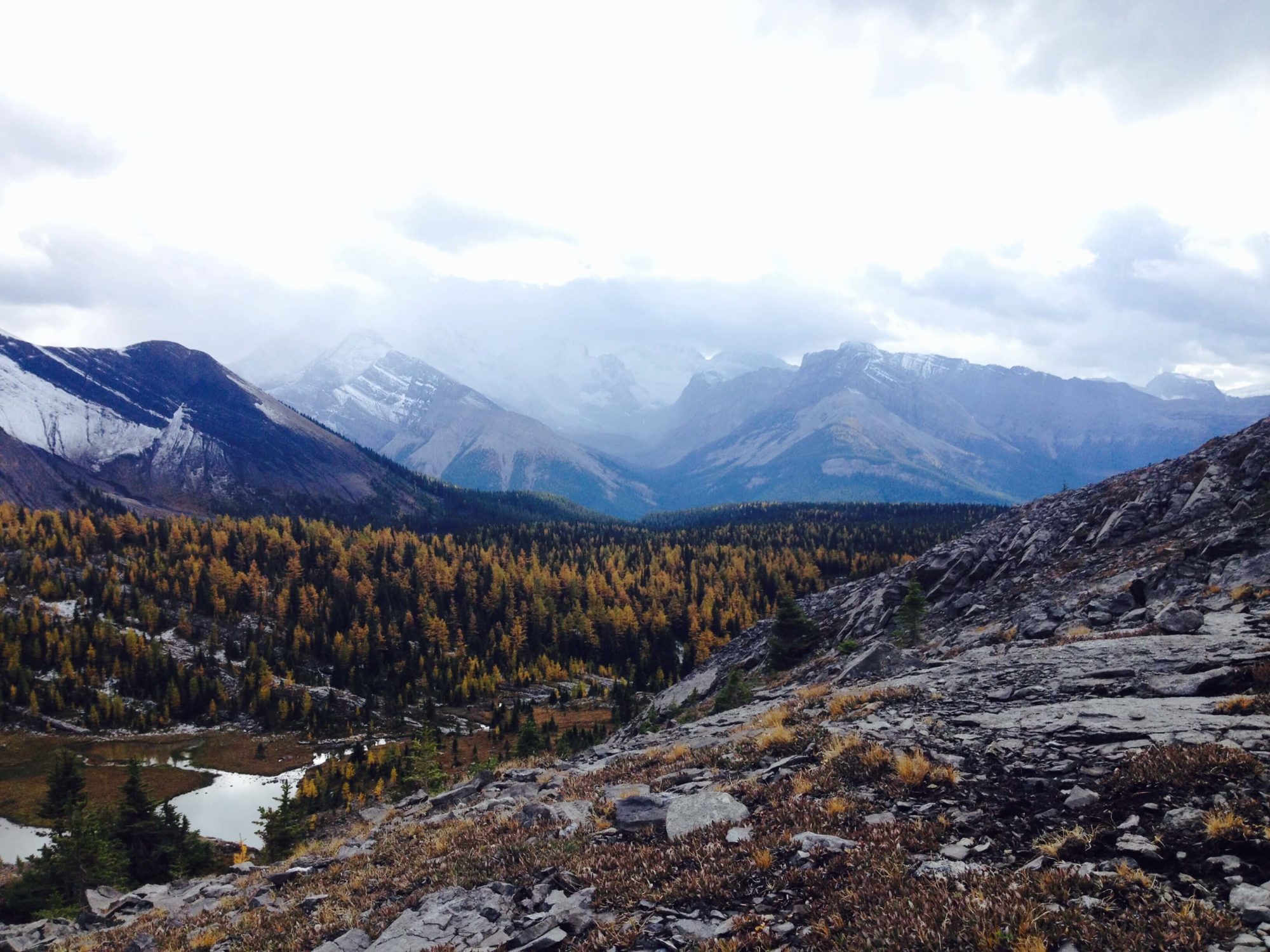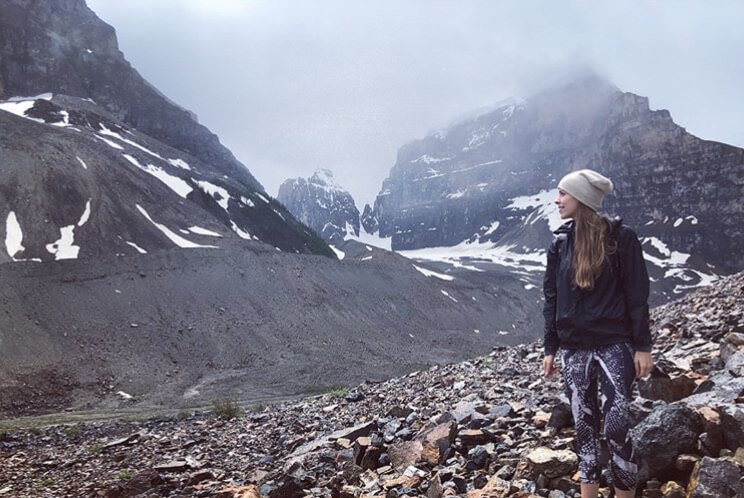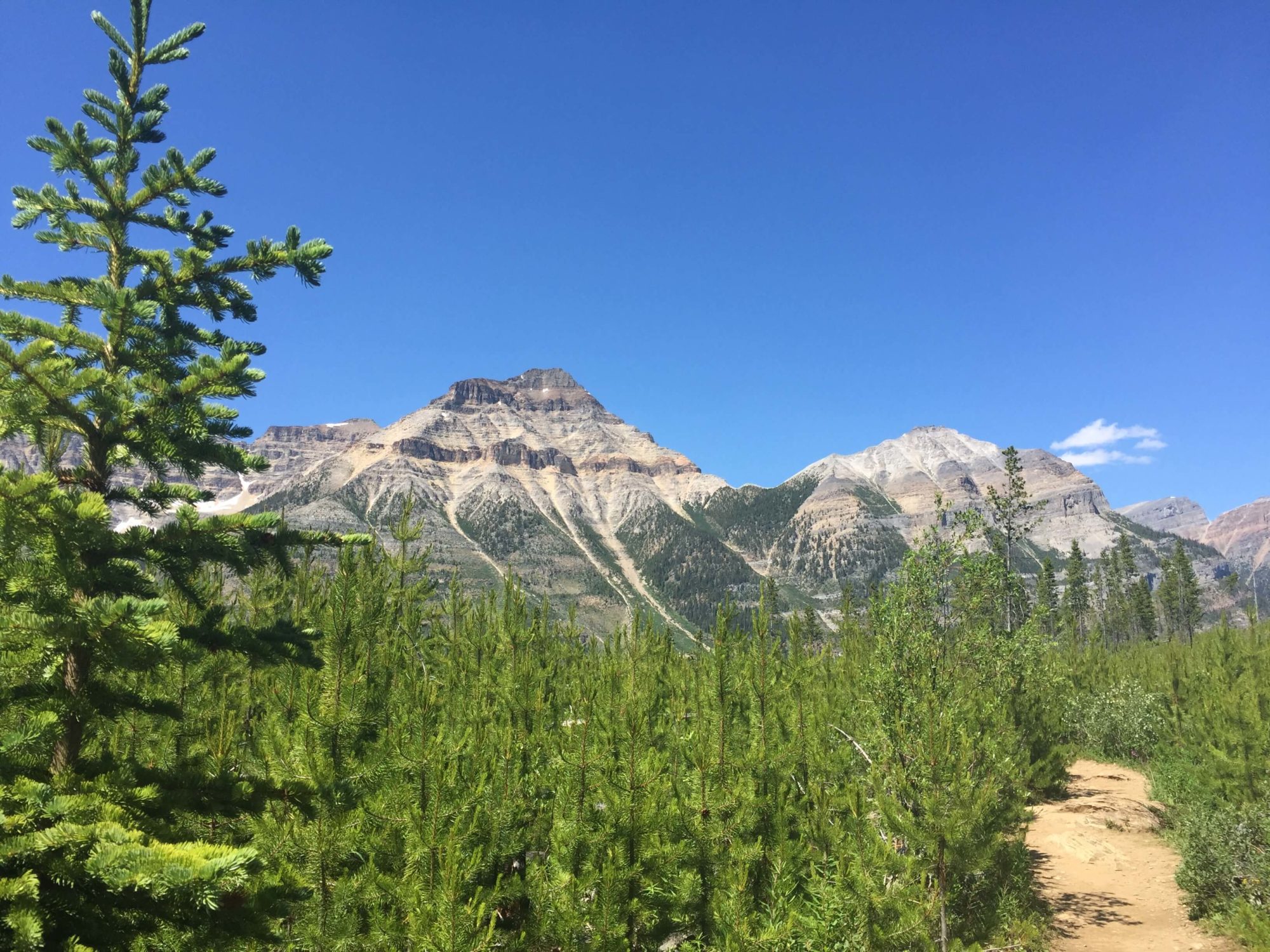When the final bell rang at the end of my primary education I wasn’t thinking of college, frat parties, scholarships, or my future career. My mind was occupied with dreams of something else. Maybe it was the years of flipping through National Geographic magazines or being dragged around the world by my globetrotting parents. Whatever the reason, I knew that I wanted to do something different. I wanted to travel. As an 18-year-old thirsty for an adventure, I wondered where I should start my once in a lifetime journey. The Banana Pancake Trail was the perfect place to begin.
What is the Banana Pancake Trail?
When I set out to travel independently for the first time, I found myself (like many before me) with an open-ended ticket to Bangkok, Thailand. Unbeknownst to me at the time, Bangkok lies at the heart of the major Southeast Asia backpacking route often referred to as the Banana Pancake Trail.
Yummmm…. I’m sure you’re feeling hungry/excited already!
Anyways…
The name found its way into the traveler’s lexicon as a way of describing the backpacking superhighway and the network of guesthouses/hostels/restaurants serving up fried banana pancakes and other westernized treats to the throngs of foreigners exploring the heavily backpacked parts of Thailand, Laos, Cambodia, and Vietnam (the exact boundaries are open to interpretation/debate and frequently add Malaysia, the Philippines, Indonesia, and Myanmar).
The stops along the Pancake Trail include a series of backpacker haunts including Siem Reap (jumping off point to Angkor Wat), Ko Pha-ngan (full-moon party haven), Khao San Road (Bangkok’s backpacker mecca), Vang Vieng (former centre of wild tubing) and many more. These famous spots provide backpackers with many of the novelties of travel combined with all the comforts of home and unprecedented opportunities for socializing with fellow travellers (you can always try asking what countries the BP trail includes, if you need a conversation opener). You’ll be sampling snake blood or eating bugs one minute, before settling your stomach down with a burger and fries the next. If this juxtaposition doesn’t tickle your fancy, fear not! Many of these backpacker haunts are often only a bus stop/tuk-tuk (3-wheel taxi)/moto ride away from a more authentic travel experience, allowing you to take a sip of a bit of whatever you fancy.
P.S. After reading this post, use the discount code PANCAKETRAIL to get 20% OFF all Banana Backpacks travel gear.
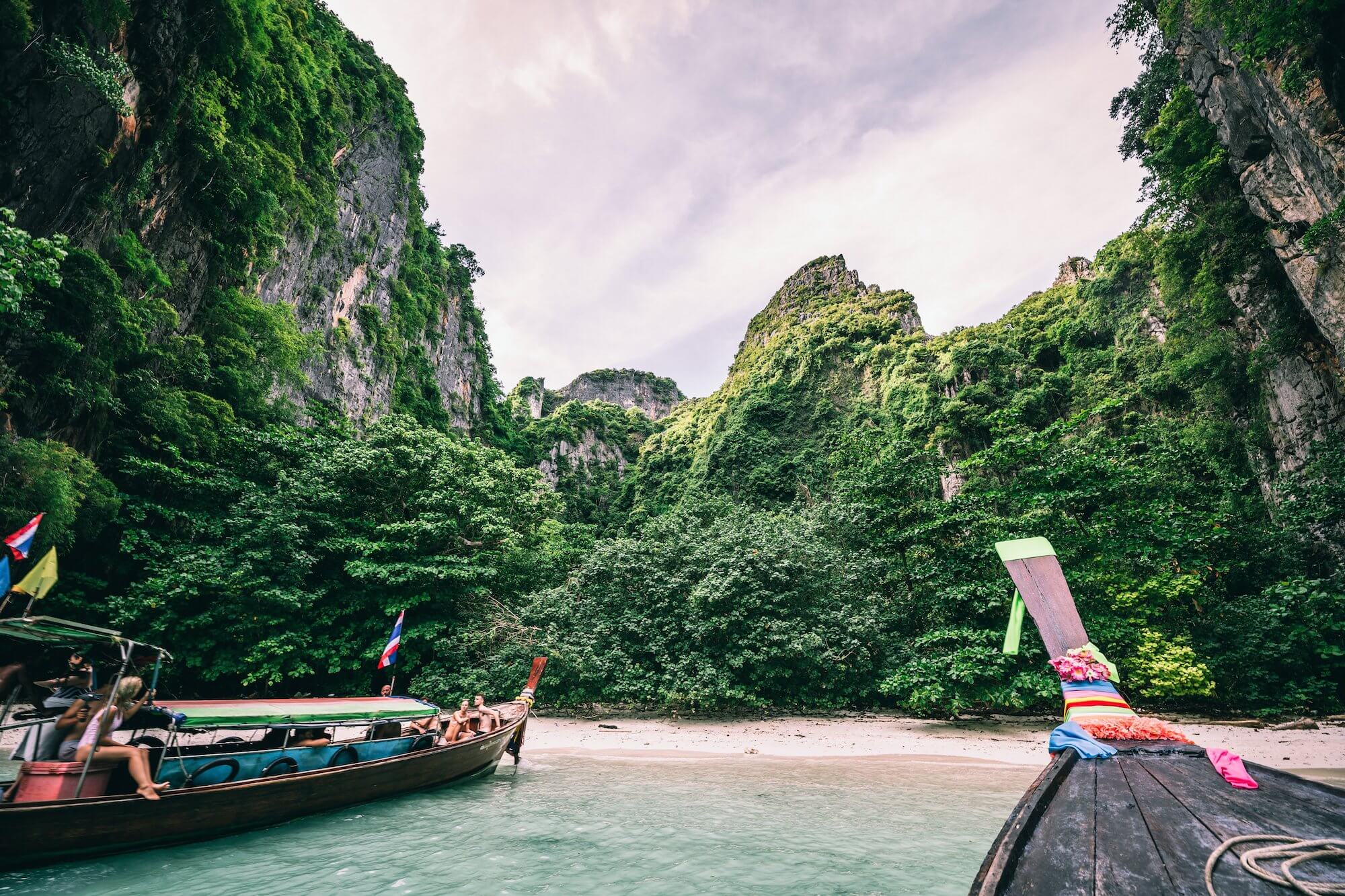
Why travel this backpacking route through Southeast Asia?
Why the Banana Pancake Trail is perfect for first time travellers
If you’re looking to travel for the first time, you couldn’t choose a better route. My 4-month journey along this Southeast Asia backpacking route afforded me a wealth of incredible life experiences (many that I’m proud of and a few I’m not (drink Thai whiskey with caution…) and kicked off my ceaseless travel addiction. Here are a few of the reasons it’s one of the best backpacking routes you could choose for your first trip:
No language problems
Scared of arriving in a foreign country with no knowledge of the language? No problem, English is commonly spoken by locals in many areas along the Trail, making communication a breeze. That said, I always recommend learning at least a few basics (think hello, goodbye, thank you). You’ll be surprised at how many doors a little effort will open for you. If you can pick up saying thank you (cảm ơn bạn) in Vietnamese without invoking hysterical laughter, please reach out to me – your tutoring skills may be required…
It’s incredibly easy to get around
Air-conditioned buses roll out every minute and travel agents slap together itineraries including multiple bus rides, speedboats, and pickups in minutes. Sure, you’ll have to be careful of being overcharged, but logistical coordination is a breeze. Simply check a couple of neighbouring travel agents and, voila, you can find the best possible prices with hardly any effort! Not to mention Grab (and formerly Uber) have made negotiating a moto-taxi fare easier than ever (don’t worry, you’ll have plenty of other chances to hone these skills).
It’s (relatively) safe
Sure you’ll hear about the occasional bag-snatch or stolen passport/wallet, but incidents of violent crime against tourists are few and far between.
Is it safe for female travellers?
To avoid any risk of mansplaining here, I’ve had my sister, Anika, weigh in. She’s spent extensive time traveling solo on the Banana Pancake Trail and lived in Cambodia. Here’s what she said about safety for female travellers on the Banana Pancake Trail:
“Compared to Europe or South America, you can rest easy knowing you won’t be cat-called, questioned for traveling as a single female, or afraid of walking alone at night in most places. Like anywhere, incidents can still happen (more often with other tourists than locals), so make smart decisions. Generally speaking, this is one of the safer places to get acquainted with travelling.”
DON'T FORGET THIS
On the Banana Pancake Trail you’ll be riding on motorbikes, taking tuk-tuks, and trying adventure activities like scuba diving. Don’t forget travel insurance! I went years without making a claim on my travel insurance until a suffered a broken collarbone and racked up medical bills in excess of $15, 000. Fortunately, I had the entire bill paid through insurance and got the care I needed. That one incident made years of paying for travel insurance a drop in the bucket! Don’t forget this.
Check out World Nomads* for a quote. Coverage includes options for medical, luggage & gear (including theft!) and trip cancellation. Hopefully you never need to make a claim, but if you do you’ll be beyond happy you were prepared!
It’s easy to meet people
All of the guest houses, hostels, partying, and inexpensive activities make meeting new friends along the Pancake Trail a breeze. The one key tip – take a moment away from tik-tok and always mind your surroundings, as there may be a new friend in your midst.
You can step off the beaten path (if you want)
Sure the abundance of fellow travellers, comforts of home, and good wifi connections may make you feel relaxed, but personal growth comes from discomfort. While the Trail is a major backpacking artery, it’s easy to step off the beaten path and every country on the trail offers ample opportunities to find the non-Westernized areas.
Are Thailand, Laos, Cambodia and Vietnam good for experienced travellers?
Okay, so maybe you’re not new to travelling. Don’t rule out a trip through Thailand, Laos, Cambodia, and Vietnam. Use the main backpacker haunts as jumping off points for off-the-beaten-path-exploration. The minute you step outside of these heavily visited places, you’ll soon realize just how easy it is to get off the beaten path. All it takes is the willingness to look. Don’t rule out Siem Reap because Angkor Wat is packed, just dig a little deeper and you may find hidden temples you have virtually to yourself. Sure, Sapa can be touristed, so if that’s not your thing, rent a bike and take the trip up to Ha Giang where children chase you down, fascinated to see a foreigner exploring their hometowns surrounded by plunging gorges and jaw-dropping mountains.
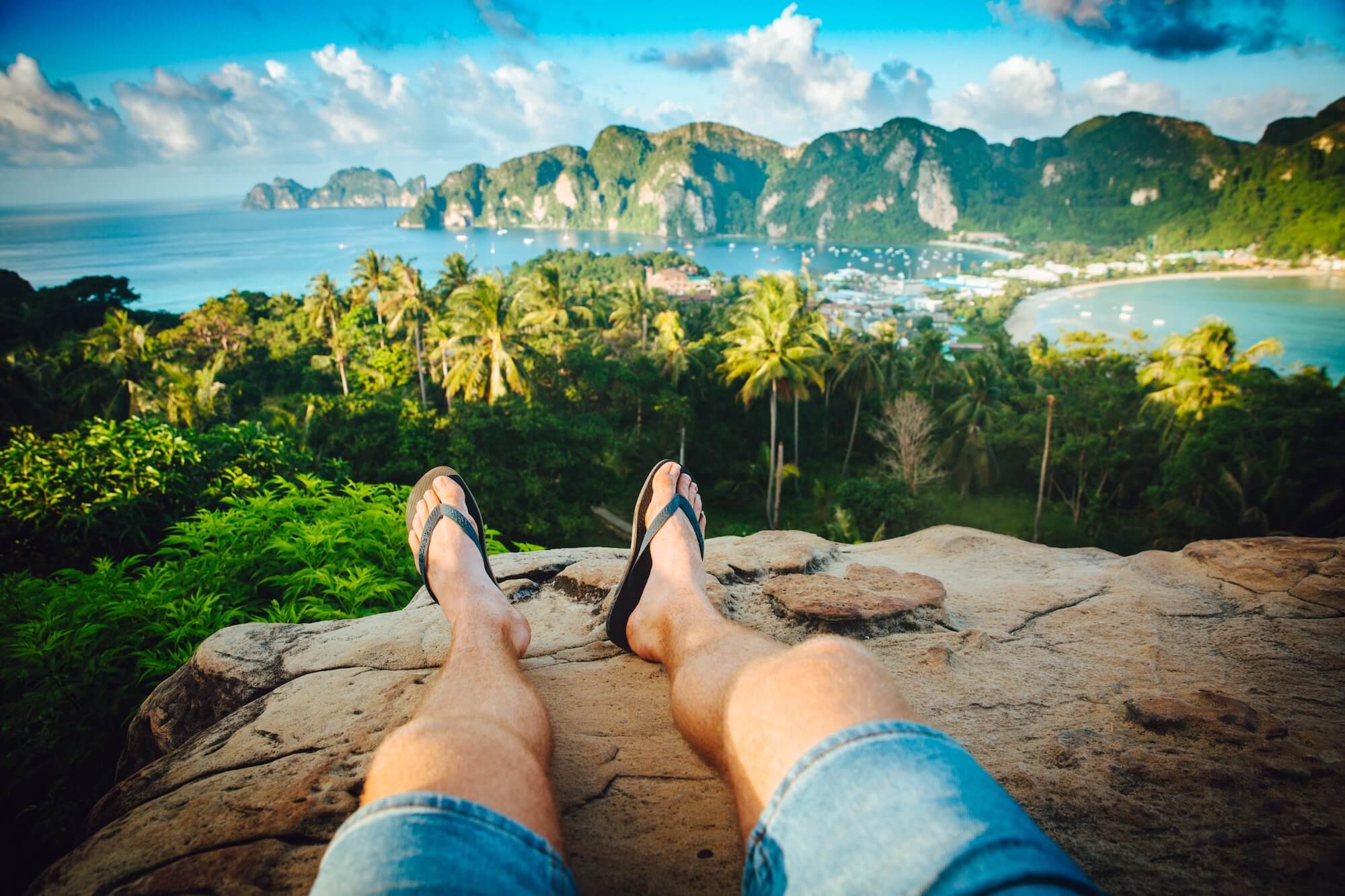
Should you bring a backpack or a suitcase?
A travel backpack is the best choice for the Banana Pancake Trail. A suitcase just doesn’t work when you’re riding on the back of motorbikes or walking long distances on uneven terrain in search of your hostel. Pick a backpack that’s weatherproof, easy to keep organized (not top-loading), and extremely durable. The Khmer Explorer Travel Set is the best backpack for this trip and was designed specifically for traveling on the Banana Pancake Trail!
How much does the Banana Pancake Trail cost?
When I set out on my Banana Trail adventure it cost me $4000 CAD for ~4 months of travel. I spared limited expense. I did skimp on accommodation from time to time and would go for week long stints eating a strictly street food diet. That said, I also took a full week’s worth of diving classes on Koh Tao, ate at many nice restaurants, and enjoyed the occasional private room with A/C. Sure, times have changed in the decade since I completed my first solo adventure, but as I’ve experienced in recent visits, this Southeast Asian backpacking route is still dirt cheap. Here’s a 2018 budget to give you an idea:
Frugal traveller budget
$20-50 per day
You’re happy to have found a way to travel, or maybe you’re trying to maximize your travel time by minimizing money spent per day. Whatever your reason, if you’re watching your dollars, this is the budget for you.
Meals
$1-2 dollars. Lots of pho in Vietnam and tons of pad thai in Thailand. Expect to eat a lot of street food and enjoy convenience store beer or bia hoi (Vietnam’s answer to the micro brew ;)). You’ll be able to venture for more premium meals out on occasion, but it doesn’t take long for $10 dollar meals to blow the daily budget.
Cheap Rooms
$5-10. You welcome bunkmates in dorms and may find the occasional fan cooled private room. For an example of what you can expect, here’s a fantastic hostel that fits this budget bill, that I’ve been treated to in recent years in Siem Reap, Cambodia.
Activities
You’ll be able to splurge on activities like a one day pass ($37 USD) to the Angkor Archeological Park, and the occasional budget cooking class and tour, but you’ll have to watch that you’re not doing too many of these activities in a given week. You’ll also have to watch that you don’t have too many excessive party nights (cocktails can be pricey).
Transport
Buses, motos, occasional cheap local flight.
Flashpacker budget
$50-100 a day
You appreciate the finer things in life, but aren’t ready to tuck yourself into a 5-star hotel just yet and still consider yourself a backpacker. You want to make the most of your trip. Maybe you’ll learn to scuba dive, drink premium cocktails, or go on a few private tours. If this is your style this is the budget for you.
Accomodation
$20-60 depending on the city/country place/time/luxury level. You’ll usually get yourself a private room with A/C for this price (a notable exception is southern Thailand which can easily go higher). Here’s an example of a $35/night for a private room with A/C at Lub’d in Siem Reap.
Meals
Activities
The flashpacker budget allows you to enjoy occasional big splurge activities like taking a scuba diving course in Ko Tao or trying canyoning or rock climbing.
Transportation
More frequent flights $40-100, premium buses, 1st class train coaches.
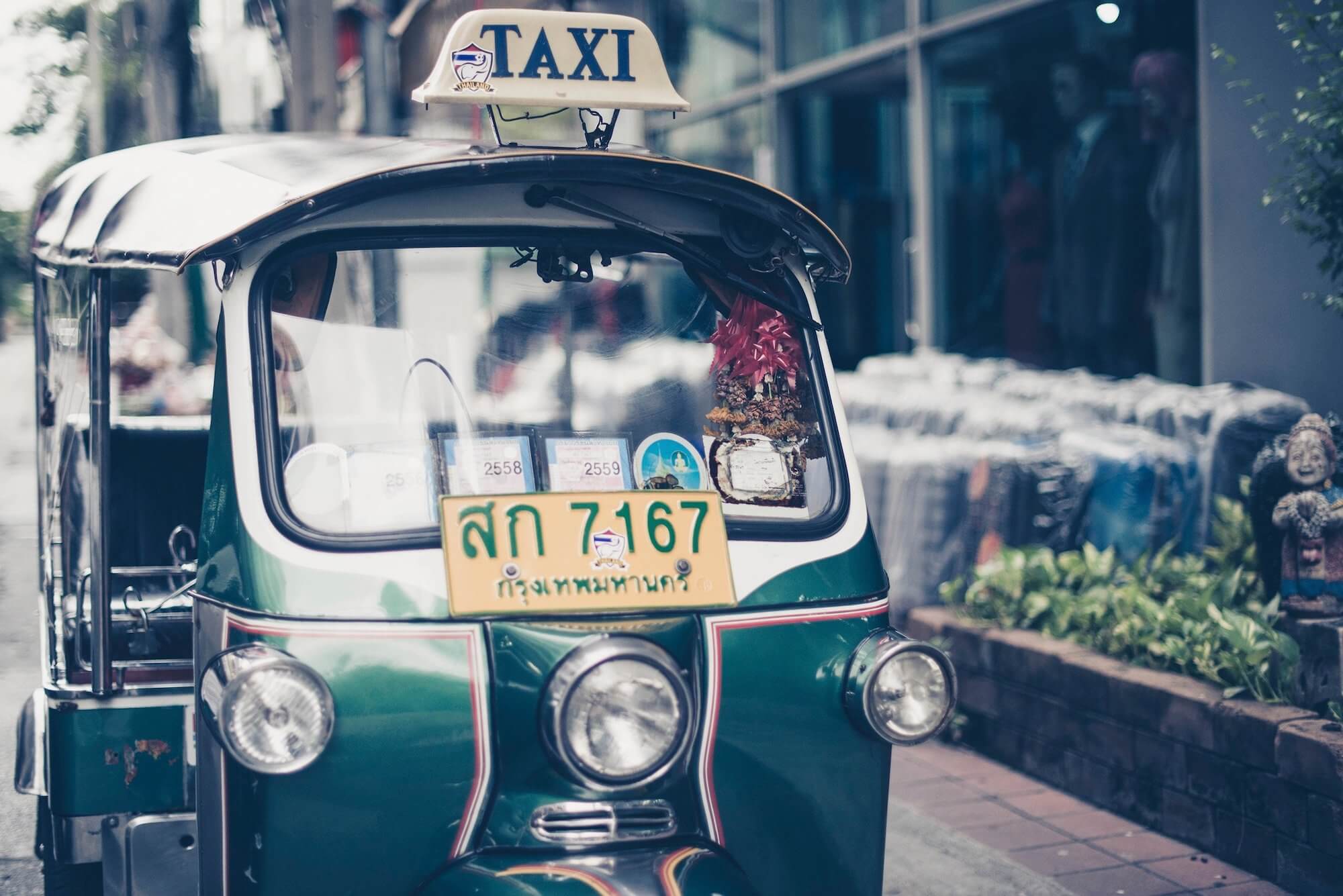
How long should you travel for in Thailand, Laos, Cambodia & Vietnam?
To accomplish a multiple country journey along the Banana Pancake Trail I strongly encourage a minimum of 6 weeks. This minimum will allow you to be flexible with your time, linger in the places you love, and not fret the ones you don’t. Don’t have 6 weeks? Less is more. Pick 1 or 2 countries and do them properly. If you have 2 weeks and are planning on hitting Laos, Thailand, Cambodia, and Vietnam, maybe cut your trip down based on what is most important to you. If you’re dying to see the temples of Angkor or hit a Full Moon party, do it! Just don’t waste your limited time on border crossings and bus rides (or the sometimes awful combination of the two). Just start planning your second trip.
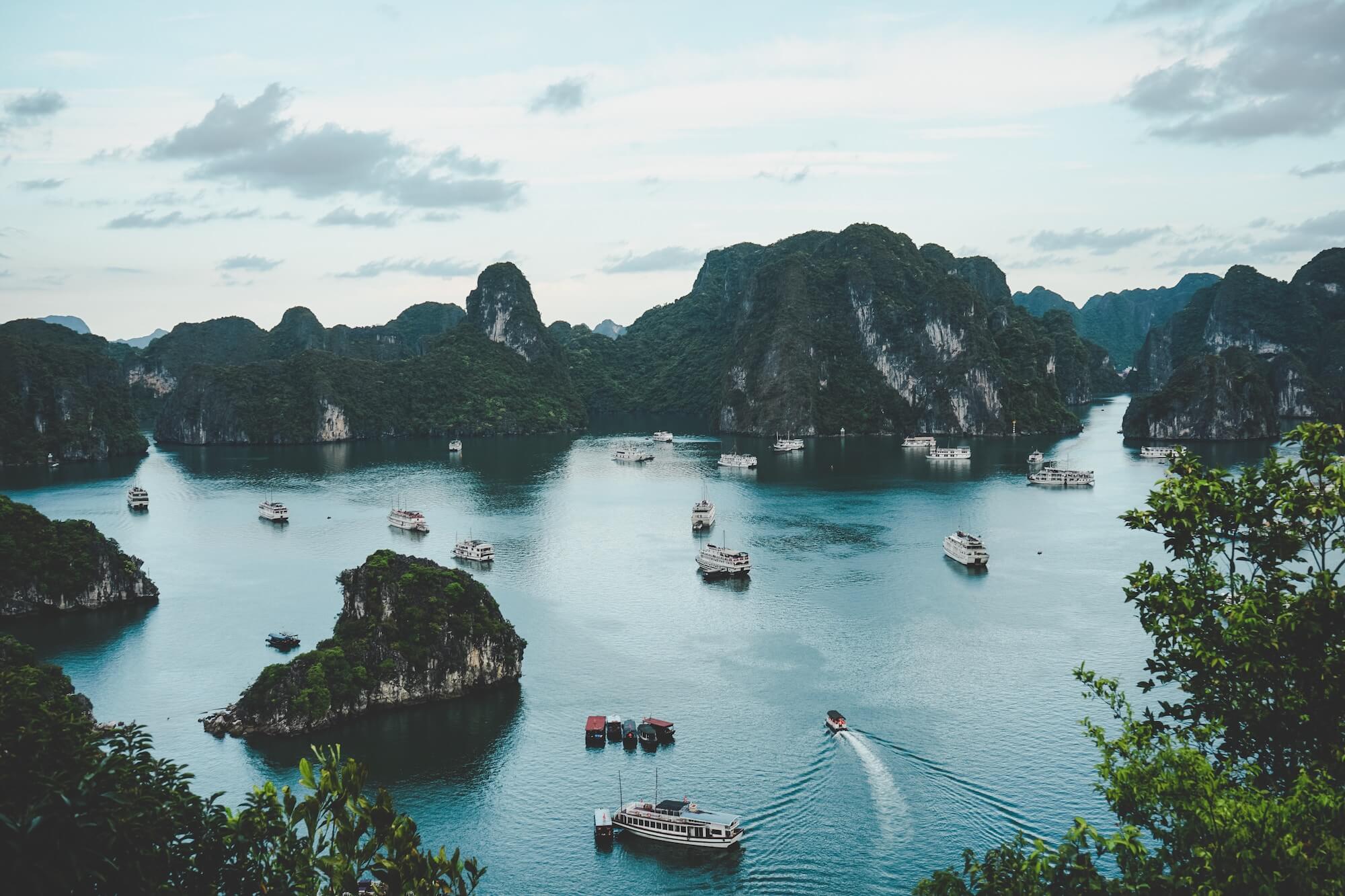
Banana Pancake Trail itinerary example
These cover the majority of key stops along the Banana Pancake Trail in Thailand, Laos, Vietnam, and Cambodia. Stay as long or as short as you want in each and don’t be afraid to get off the well-trodden path.
Bangkok → Enter the heart of the Banana Pancake Trail, Khao San Road.
Koh Tao → Learn how to scuba dive by getting PADI certified with every other Banana Pancake Traveller.
Ko Pha-Ngan → The epicenter of the world famous Full Moon Party.
Krabi→ Climbing and beautiful beach chillin’.
Ko Phi Phi → The world famous “Beach” at Maya Bay (temporarily closed due to overtourism so check before you go… and carefully consider your choice as a responsible traveller).
Siem Reap → The mystical temples of Angkor.
Phnom Penh → Get acquainted with Cambodia’s dark and recent past and witness its promising future.
Sihanoukville to access Koh Rong → Restart your beach and party engine.
Ho Chi Minh City → Wander the chaos of Ben Thanh Market and glimpse the horrors of war at the War Remnants Museum.
Da Lat → Not as “pancakey” as the other spots. Enjoy Vietnam’s coffee at its finest and experience an easy rider motorbike trip
Nha Trang → Pit stop at Vietnam’s largest beach resort.
Hoi An → Beautiful and incredibly touristed. Home to all forms of custom textiles/tailoring.
Hanoi → Experience the wonder of the capital, sit and sip Bia Hoi along a street corner and pay homage to the embalmed Ho Chi Minh himself.
Ha Long Bay → Take the iconic boat ride through thousands of limestone karsts and isles in various shapes and sizes.
Sapa → Train north from Hanoi to the mountains of Sapa to experience trekking and the coldest temperature you’ve felt in months.
Luang Prabang → Experience the ancient capital with its many Buddhist temples.
Vang Vieng→ The infamous tubing (re-opened after cleaning up its act).
Vientiane → Experience Laos’s most important religious monument, the large golden Stupa.
Chiang Mai → Cultural mecca and swarms of digitally nomadic people.
Pai → Mountain/valley exploration.
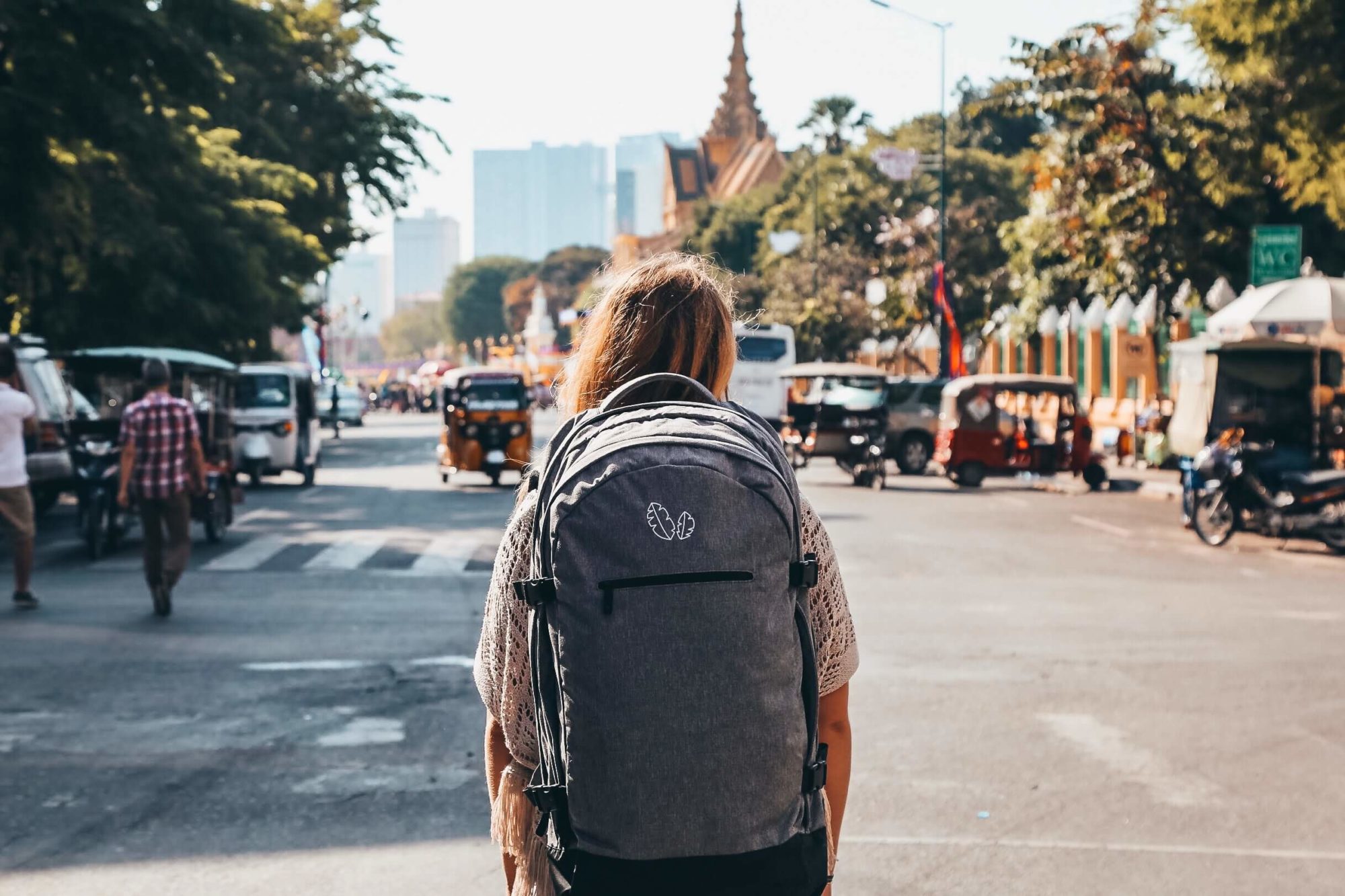
Should you book things in advance or just wing it?
In my opinion, the best way to travel the Banana Pancake Trail is a bit of both. Book accommodation for the first couple nights you arrive from abroad. You’ll be tired from travelling, and the last thing you want is to be stumbling hostel-to-hostel in a jet lagged stupor! If you’re flying into Bangkok, book for 2-3 nights at one of the following spots:
- If you came to Bangkok for a party Mad Monkey is your place. That’s all I need to say.
- Quiet, clean, friendly Baan Kachitpan is a new and charming place that takes the cake for quality in the budget category. It’s also walking distance to Khao San Road and the Grand Palace area.
- If you’d prefer to stay away from Khao San Road in the more upmarket Siam Square area, Lub d Bangkok is your spot. It’s a modern, renovated hostel with all the fixings.
After getting settled and meeting a few people, you’ll develop an idea of where you want to go next. From there, you can make a booking a couple days before heading out or just show up and wing it. Historically, I’ve had far worse experiences being stuck in a place I pre-booked and hated, than I have trying to find a place without without a booking.
You should be able to roll with this methodology throughout your trip. In the pre-Covid world, it was also a good idea to book accommodation well in advance for things like Ko Pha-Ngan Full Moon party, but with Thailand tourist statistics still well below their historical numbers this too is probably not required at the moment.
What do you need to bring and prepare for the Banana Pancake Trail?
Here are a few pointers/must packs for your Southeast Asia trip:
Travel Insurance
.Hopefully you never need to make a claim, but if you do the decision you made to remember to buy travel insurance is likely to be one you thank yourself for making for the rest of your days. Check out World Nomads for a quote.
Shots & medication
Determine if you require any vaccines before traveling to your destination. If you haven’t traveled to an equatorial region before, it’s highly likely you’ll need at least a few.
Vaccination can be a comprehensive process, so it’s a good idea to look into this a few months before departure.
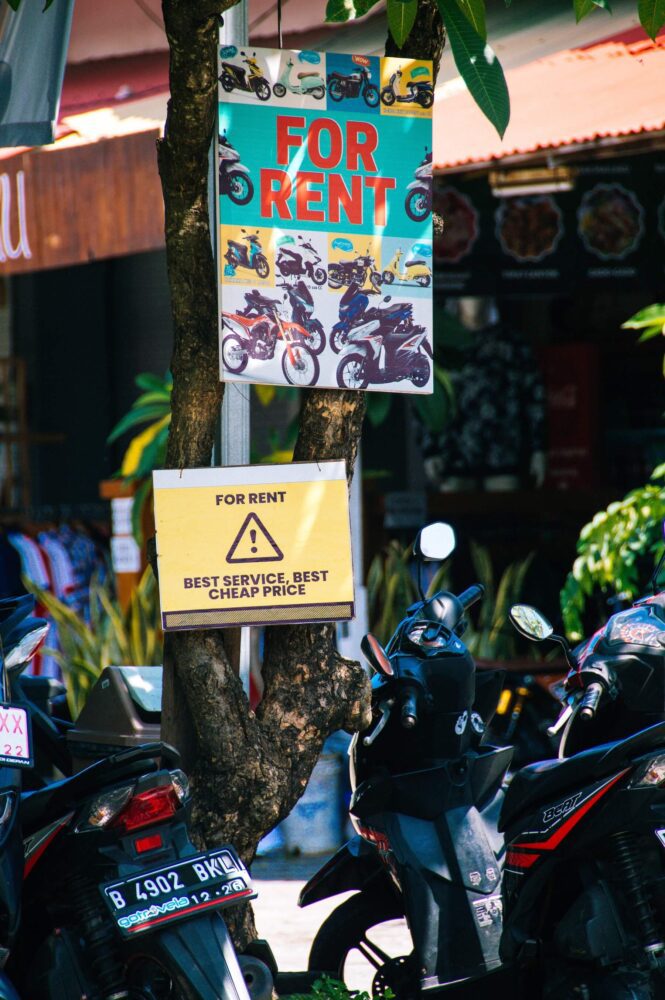
Get an International Drivers Permit
If you’re planning on renting or driving a motorbike in Southeast Asia, you need to get your International Driving Permit. Not every country will recognize your home country’s drivers license as valid. While most rentals will not ask for an international permit, the police check for it frequently in many countries and a foreigner on a scooters is often low-hanging fruit. If you’re thinking about renting a scooter or motorbike at anytime get your International Drivers Permit before your trip, just in case.
Use a VPN to stay safe online
On the Banana Pancake Trail your smartphone is often your map, translator, camera, and travel guide. It is only natural that you’ll find yourself connecting to the nearest public WIFI network to check something quickly when you’re on the road. Stay safe on public wifi networks with a VPN (Virtual Private Network). A VPN hides your identity online and prevents whoever runs the WiFi network from seeing what websites you’re checking out. I use NordVPN constantly when I’m travelling and highly recommend you download and install it now before you forget! It typically doesn’t cost more that a couple dollars a month and as an added bonus, you can use it to mask your location and watch your favourite Netflix show on your long bus ride that might not otherwise be available in Thailand. 🙂 Check out this discount on NordVPN.
A quality travel backpack
Variable terrain and lots of walking make a travel backpack the perfect luggage choice. Leave the roller suitcase at home (you’ll thank me later). Check our our post on the best backpack for Thailand for more insight on what to look for.
A everyday backpack or bag
For adventurous trips a great everyday backpack is essential. It’s your airplane carry-on, your laptop bag, hiking pack and beach bag. The customizable Kiri collection was built to be the ultimate day pack for trips like banana pancake trail.
Unlock your cell phone
Call your network provider to ensure your phone is unlocked. This way you’re all set up to grab a new SIM card upon landing and avoid the pains of massive roaming charges and the sometimes questionable wi-fi (data is often way better and crazy cheap). All the countries along the Banana Pancake Trail tend to have dirt cheap SIMs readily available (although they often do not work when moving from one country to the next (ie. Vietnam SIMs won’t work in Cambodia).
Notify your bank
Many banks no longer require you to directly notify them of international travel to prevent an unwanted account freeze, that said, best to check the policy to be sure. Thousands of miles from home with no access to money is not a fun way to start.
Bring a bit of cash
A first stop after disembarking the plane is usually the cash machine. That said, the last thing you want to deal with when you land is a broken ATM and no money (been there). So take $100 USD in cash (small denomination is usually best). In a pinch you usually find a money exchange at the airport with poor rates (a necessary evil at times).
Bring a water bottle with water purification tabs or a Steripen
It’s hot. You’ll sweat. A lot. I wouldn’t recommend drinking the tap water in many places. Thinking of buying bottled? Please don’t. Traveller water bottle garbage is a HUGE problem for plastic pollution in the ocean. Bring your own bottle and use a Steripen (check price at Amazon / REI / MEC ) or purification tablets (view at REI / MEC) to purify the water if you can’t find any that is safe to drink (many hostels have water coolers you can fill up from).
Pack a portable power bank
Comes in handy when you need to charge your phone/tablet in a bind. I love this one by Zendure, it’s tiny and I get over 2 full charges on my Iphone 13 out of it.
Choose clothes you feel comfortable in
I’m not going to tell you to bring 2 t-shirts, 1x, and 1y, because everyone is different. Some of you may view it worthwhile to pack a pair of jeans for a fancy night out in Bangkok or HCMC, others may find that proposition crazy. Some of you may want to bring your favourite tapered sweatpants, that’s fine too I guess… Before I hit the Banana Pancake Trail, I loaded up on breathable gear for a hot climate (thanks Dad…). I ended up wearing none of it, giving away a lot of it, and carrying the rest around for the duration of my trip…
The weather in Cambodia, Laos, Vietnam, and Thailand is tropical and hot. There are generally two distinct seasons: rainy (several hours of intense rain) and dry. Higher elevations (such as parts of Northern Vietnam) may be chilly at night. So pack items you’re comfortable in based on this. No need to redo your wardrobe…
One clothing item I wish I packed
One item that I wish I had brought, was an ultra-light sun hoodie! I learnt about these things from thru-hikers doing the PCT trail and they are an absolute game-changer for travel! They let you get away without having to put sunscreen on/reapply on city days and help keep you protected on any post-burn days which inevitably happen after getting a little too tan-happy (been there!). They’re also surprisingly breathable and cool. The Sahara Sun Hoodie (check price at REI men’s/women’s) has served me well and you can’t beat the price.
A sheet sleeping bag liner
I helped a good pal of mine pack for his first big trip and I told him to get a sheet sleeping bag liner. He wondered why he was lugging this little thing around until one night he was forced to crash in a place with questionable cleanliness. Suddenly, he wasn’t wondering why I insisted he brought this. Check out this one from Sea to Summit (check price Amazon / REI) that was built specifically for travel.
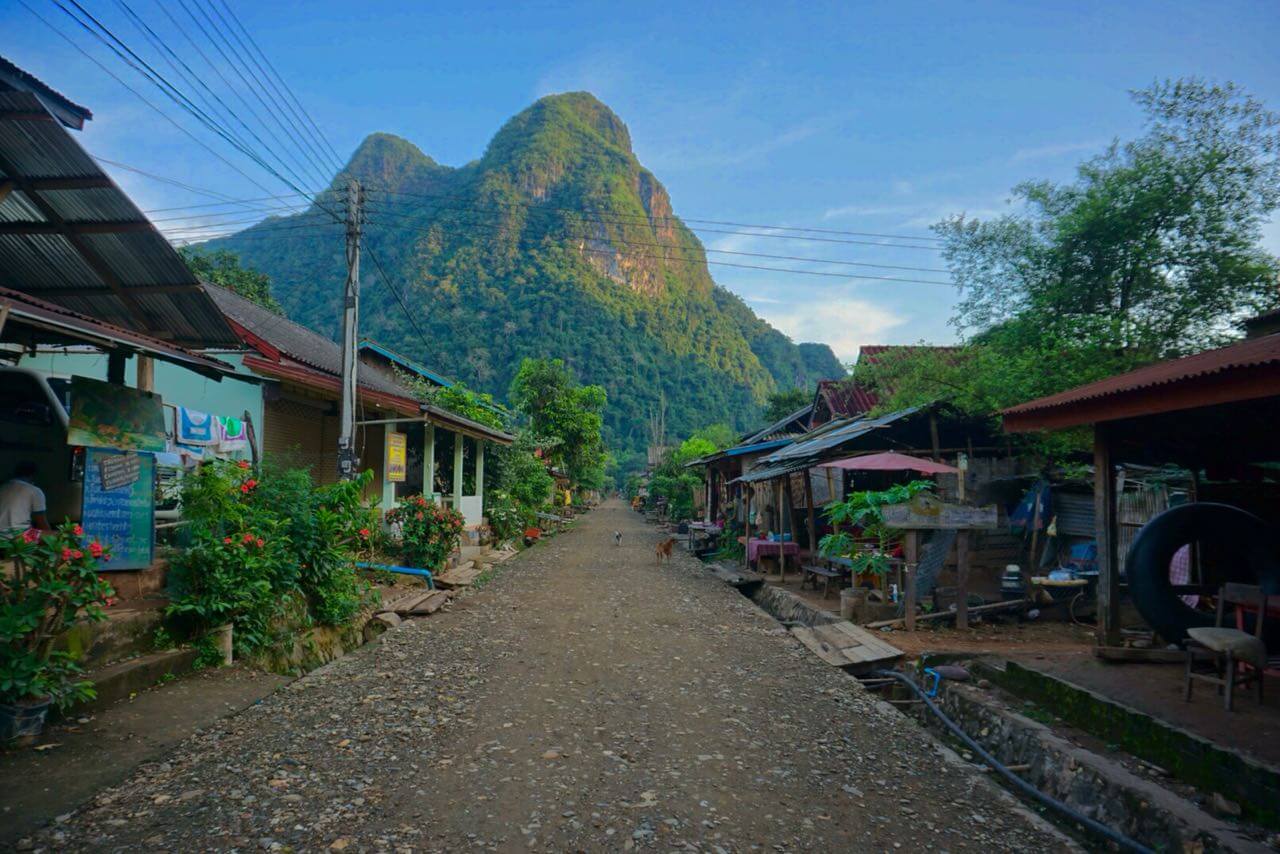
Final Thoughts
The Banana Pancake Trail has developed fame (and notoriety) as the definitive Southeast Asia backpacking route. It’s a great place to start out traveling for the first time or to use a as a jumping off point for more off-the-beaten-path adventures. Over a decade after my first journey here came to an end, I continue to feel immense gratitude for the life experience my first adventure through Vietnam, Cambodia, Laos, and Thailand brought me (I’m tearing up here!). I, the man speaking to you from behind the computer, highly recommends this experience to new and experienced travellers alike whether you’re into banana pancakes or not! 🙂
Happy travels friends!
Have you tasted a banana pancake? What did you think? Maybe you have questions about the Banana Pancake Trail or personal experiences? Maybe you’re a grumpy travel troll who would like to lambaste me for writing on this subject. Any of these categories are welcome in the comments below, although I’m not enthralled with the last option.
P.S. Don’t forget to use the discount code PANCAKETRAIL to get an incredible secret discount on Banana Backpacks travel gear.
Disclaimer:
*Some of the links in this post may be affiliate links. If you click one of the links and make a purchase we’ll earn a small commission at no cost to you. We’re very particular about any products or services we suggest and we test and use them ourselves before making any recommendations or endorsements. *
Banana Backpacks Inc. is a participant in the Amazon Services LLC Associates Program, an affiliate advertising program designed to provide a means for sites to earn advertising fees by advertising and linking to Amazon.com
You might find these helpful
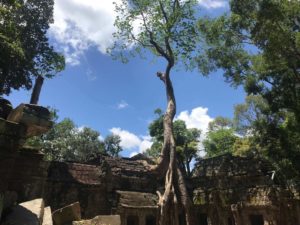
The 5 Best Cambodia Itineraries | Plan the Perfect Cambodia Trip
After living and exploring Cambodia for years, I’ve put together this robust travel guide and itinerary planner. If you’re planning a trip to Cambodia and mapping out the perfect Cambodia itinerary there’s something in the post for you!
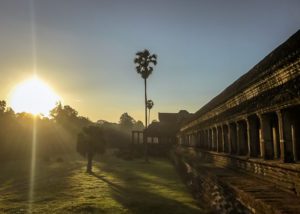
Things to do in Cambodia | 50 Adventures in the Kingdom of Wonder
These 50 incredible things to do will help you plan the ultimate Cambodian adventure! Discover secret temples, kayak remote backwaters, and take your trip to the next level with this guide.

Ha Giang Loop | The complete guide to motorbiking Ha Giang
The Ha Giang Loop features snaking turns and stunning vistas spread through 4 epic days in Northern Vietnam. Here’s how to do it!
